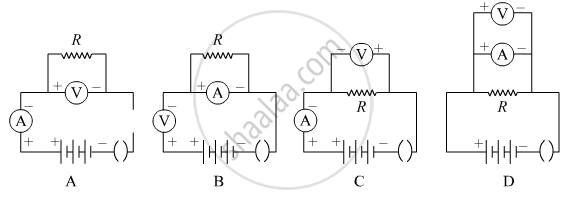Advertisements
Advertisements
प्रश्न
A current of 0.2 A flows through a wire whose ends are at a potential difference of 15 V. Calculate:
(i) The resistance of the wire, and
(ii) The heat energy produced in 1 minute.
उत्तर
Given, current, I= 0.2 A; p.d. = 15 V
(i) A/C to Ohm's law
V=IR
R = `"v"/"I" = 15/0.2 = 75 Omega`
(ii) energy produced in one minutes is:
H=I2 Rt = (0.2)2 x 75 x 60 =180 J
APPEARS IN
संबंधित प्रश्न
Name a device that help to measure the potential difference across a conductor.
State whether a voltmeter has a high resistance of a low resistance. Give reason for your answer.
The p.d. across a lamp is 12 V. How many joules of electrical energy are changed into heat and light when:
a charge of 5 C passes through it?
A potential difference of 20 volts is applied across the ends of a resistance of 5 ohms. What current will flow in the resistance?
A p.d. of 10 V is needed to make a current of 0.02 A flow through a wire. Wire p.d. is needed to make a current of 250 mA flow through the same wire?
Which one of the following is the correct set-up for studying the dependence of the current on the potential difference across a resistor and why?

A cell of e.m.f 2.0 V and internal resistance 1Ω is connected to the resistors of 3Ω and 6Ω in series. Calculate:
(i) the current drawn from the cell,
(ii) the p.d. across each resistor,
(iii) the terminal voltage of the cell and
(iv) the voltage drop.
Exercise.
Calculate the amount of charge that would flow in 2 hours through an element of an electric bulb drawing a current of 2.5 A.
Assertion (A): Charges flow from higher potential to lower potential.
Reason (R): Current flows mainly due to the flow of electrons.
Twenty-seven drops of same size are charged at 220 V each. They combine to form a bigger drop. Calculate the potential of the bigger drop.
